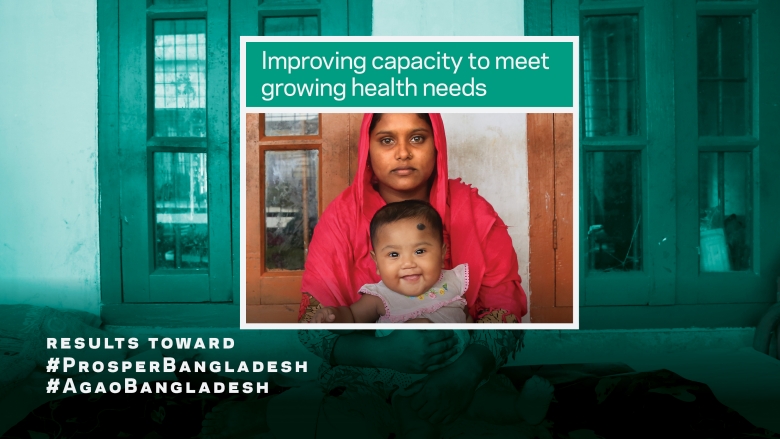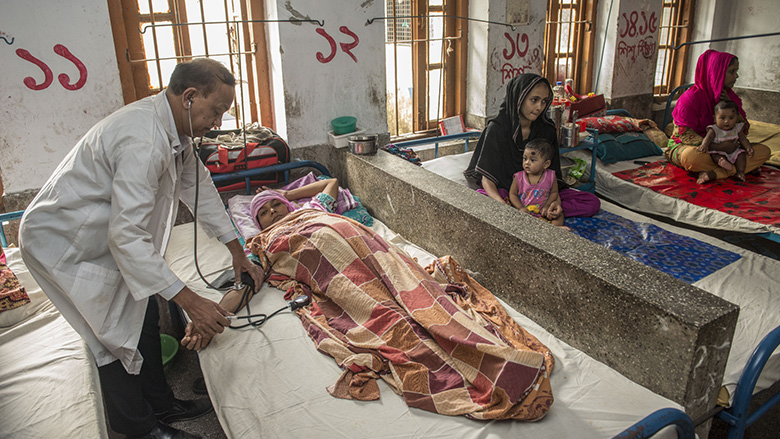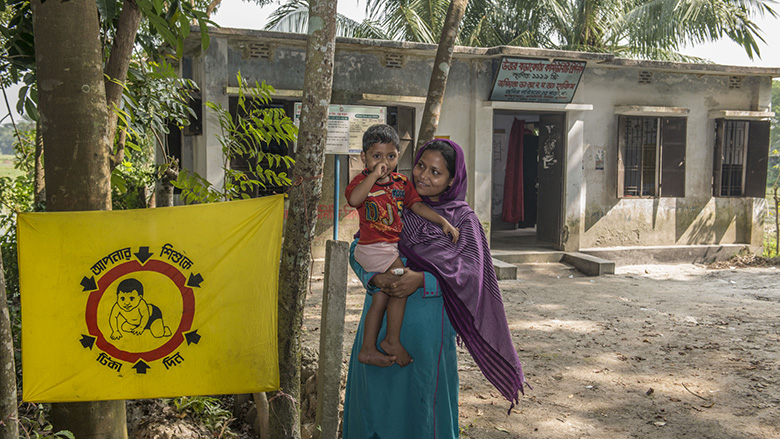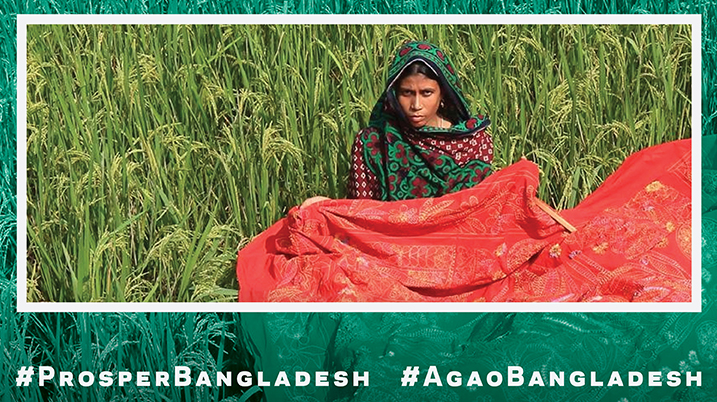Solutions – Investments to achieve universal health coverage
The Government of Bangladesh has a Health, Nutrition and Population (HNP) Sector Development Program, which laid out the countrywide health strategy for 2011 to 2016. The World Bank finances a portion of the $7.7 billion program, along with eight international development partners, with nearly $889 million in a sector-wide approach (or SWAp) – one of the largest health operations in the world.
The Government has prepared a new HNP Sector Development Program for the period 2017 to 2021, which it sees as fundamental for achieving the Sustainable Development Goal of universal health coverage (UHC) by 2030. The World Bank and development partners are preparing to support its implementation through a Program for Results (PforR) focused on verified progress in service delivery to the most vulnerable, systems strengthening and laying the foundation for new challenges. This operation is expected to be approved by the World Bank Board in February 2017 with financing from IDA ($300 million to $500 million), the Global Financing Facility ($30 million) and development partners ($200 million).
The Bank is also implementing a program of Advisory Services and Analytical work, which aims to inform Bangladesh’s efforts to achieve UHC. Focus has been on meeting the challenges related to health workforce, non-communicable diseases, mobilizing fiscal space for health and work related to health in urban areas.
Results – Solid, encouraging gains.
Bangladesh has recorded:
- A 40 percent reduction in maternal mortality, down to 194 deaths per 100,000 live births in 2010 from 320 deaths in 2000.
- A 29 percent reduction in under-five child mortality, down to 46 deaths per 1,000 live births in 2014 from 65 deaths in 2007.
- 42 percent of births attended by medically trained professionals in 2014, up from 21 percent in 2007.
- 84 percent of children under 23 months received basic vaccination in 2014
- 2.3 total fertility rate (children per woman) in 2014 after a long plateau in the 1990s around 3.3 children per woman.
- 62 percent contraceptive prevalence rate in 2014, up from 55 percent in 2007.
- 13,006 Community Clinics made functional in the last six years.
- 64 percent of pregnant women receiving ante-natal care from a medically trained provider in 2014, up from 53 percent in 2007.
- 33 percent children underweight in 2014, down from 41 percent in 2007





